Moss and lichens are the fluffy, spongy, and scaly growths we find deep in the forest. We see moss on the ground, on logs, on rocks, and on the side of trees. It normally thrives in shaded and moist areas.
Is moss edible, or is it poisonous?
Moss can help you find true North, insulate a shelter, find and purify water, and treat wounds. Some types of moss and lichens are edible, while others are either mildly toxic or downright poisonous for humans.
In this article, I will cover how to identify edible moss, where you can find it, and how to eat it. I will also cover the health benefits of this unique type of survival food.
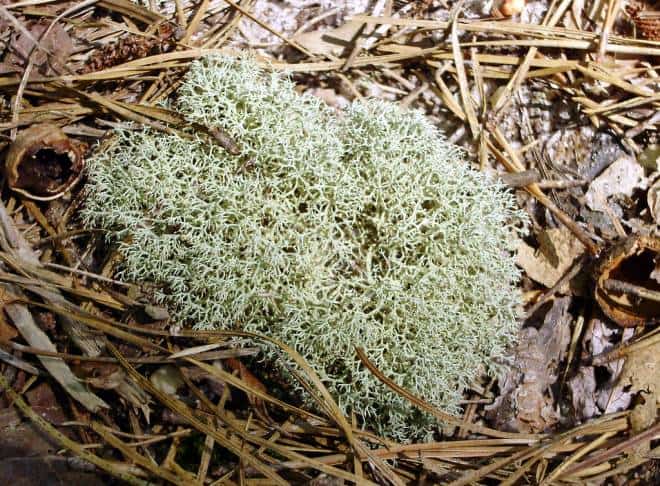
Types of Edible Moss
Reindeer Moss – This type of moss only grows to about an inch tall and is gray and branchy in appearance. It is actually a lichen and can be seen with red tips on the branches that look like flowers from a distance.
Reindeer moss, also known as caribou moss, is a primary source of food for both of these animals. It is most prevalent in the boreal forests of Canada and throughout the tundra. Normally you will find it on a thin layer of soil on top of rocks.
You can eat reindeer moss raw if needed, but the acids can upset your stomach. Natives typically boil it until soft.
You can then mix it with berries, fish eggs, or lard to give it a better flavor and texture. You can also crush the lichen and made medicinal tea.
Reindeer moss is used medicinally by natives to relieve kidney stones. It can also be used to help ease diarrhea.
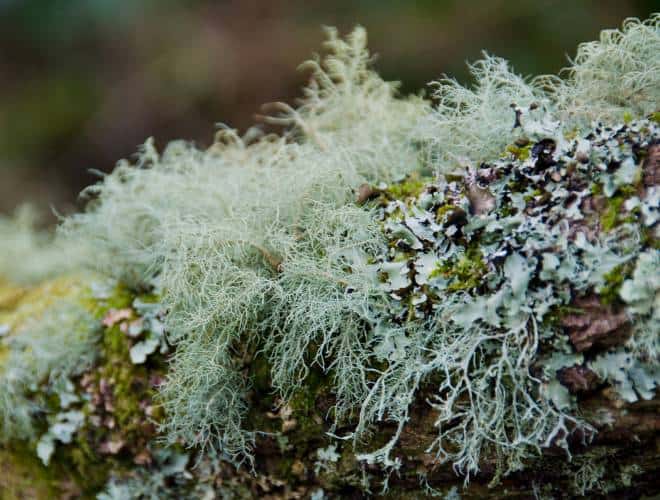
Oakmoss – This moss is actually a lichen as well, and is found in a similar climate to reindeer moss. However, it grows mostly on the trunks and branches of oak trees.
In addition to oaks, it can be found on pine and fir trees. Sometimes, strong winds can break it free, and it can be seen on the ground like small tumbleweeds.
This lichen tends to be a bit more hearty and can be found across the cooler, mountainous regions of the US, Canada, and Europe. It also has a branchy appearance and a gray or light green color.
It does grow to be a bit longer reaching two to three inches in length and sometimes resembles deer antlers in clumps on the bark of trees.
The perfume industry has long used oakmoss because the acids within produce a fragrant, woody scent. However, these same acids make it fairly toxic if eaten raw.
There is even a story floating around about a hiker committing suicide because raw oakmoss caused stomach pain he could not stand.
However, when cooked properly it is quite delicious. To extract the acids, you should at least boil the lichen twice dumping the water in between rounds.
From there I suggest frying it in oil and adding salt and spices. However, once boiled it should be fine to eat.
Raw oakmoss does have the ability to heal. Acids within the lichen can help with infections and surface wounds, so keep it in mind for your first aid needs.
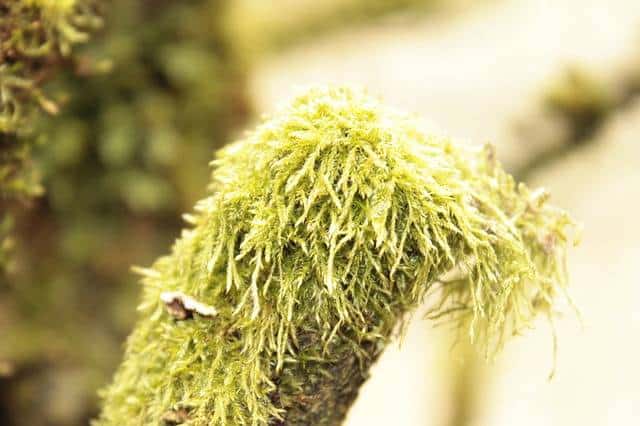
Spanish Moss – Like most edible “mosses”, Spanish moss is not a moss at all. It is actually a flowering plant that grows in the Southeast US, Mexico, Central America, South America, the Caribbean, and the West Indies.
You normally will see this long, stringy plant hanging from oak and cypress trees. It adds a unique atmosphere to areas like Charleston, SC, and Savannah, GA.
This plant targets these trees because they leach minerals like calcium, magnesium, potassium, and phosphorus into the soil. However, they will also grow on sweetgums, crepe myrtle, and pines.
The plant thrives in full sun and partial shade and hangs in strings up to 20 feet long. It does have green, brown, and yellow flowers, but they are tiny and rarely noticed. The color of this plant is nearly white and sometimes gives these trees an eerie appearance.
Most of the plant cannot be eaten, so some preparation is required. There is a small portion that you can nibble on, but it is not worth the effort. Instead, you can make tea or syrup out of the plant.
It is suggested that you steep the plant in boiling water, and then add sugar. The plant has a rich, earthy flavor that is complemented by the sugar. Fish out the plant material, and either drink the liquid or reduce it to a syrup.
This plant has several medicinal purposes. It can help heal skin issues and can be used as a pain killer. It has been used by natives to treat fevers, and also can help lower blood sugar.
It has antibiotic properties, helps nursing mothers produce milk, helps with diabetes, aids infantile epilepsy, and rheumatism.
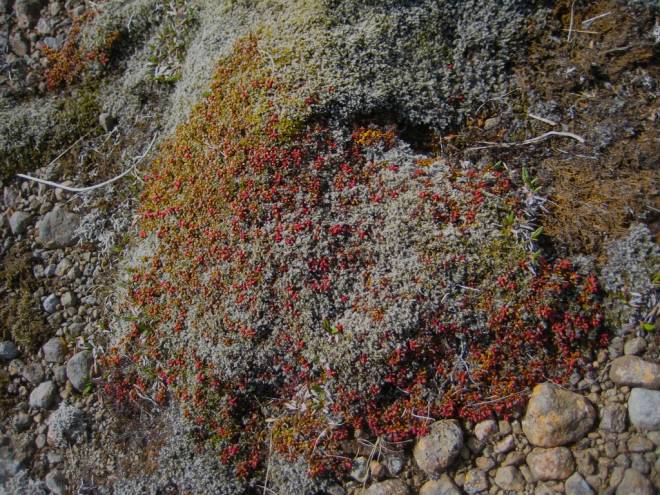
Iceland Moss– This lichen, while found in Iceland, is also found in most cold regions in North America and Europe. The moss is most commonly seen at higher elevations on the mountain ranges of these areas.
It is chestnut in color and grows to about four inches in length. It starts to roll about halfway up the branch.
The lichen is heavy in starch, and thus serves to replace starches when none are available.
It can be ground to use in breads and porridges, and can be boiled to use in soups. It is rarely used these days for food, but at one time it was a primary source of starch for those living in these regions.
Iceland moss can be used for medicinal purposes. The acids present in the lichen can be extracted and are soluble in alcohol. They help with constipation and with chest ailments.
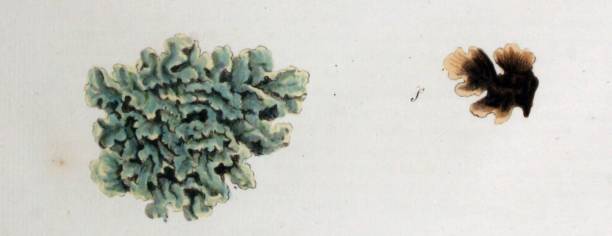
Kalpasi – Also known as black stone flower, this lichen is typically found in the Northern and Southern hemispheres of Asia.
It is also readily found in Ireland on branches and rocks. It prefers acidic bark or silica-based stones in direct sunlight.
The lichen grows up to about seven inches across with broad leaves. It is greenish-grey in color. The leaf turns black towards the base and dark brown towards the edge.
Kalpasi is primarily used in spice mixes along with other Indian spices such as cardamom, cumin, curry, star anise, and cinnamon. To get the best aroma and flavor it should be dried and then cooked in a little oil before being added to food.
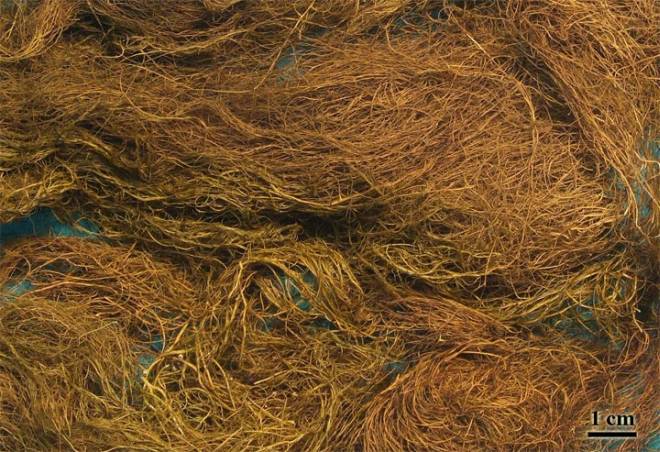
Wila– This lichen grows abundantly in North America, and is actually the lichen most widely used as a food source. It grows in northern regions hanging from conifer trees, and is dark brown in color.
Typically, you will find this growth along the base of the Rocky Mountains at elevations of 1,000 feet to 2,500 feet. This lichen can be distinguished from look-alikes by its length.
It normally grows longer than 10 inches and sometimes grows as much as four feet long. It tends to grow high in trees and prefers dead or dying trees.
Wila has been heavily relied upon for food, but today is considered a delicacy. It is normally harvested in July. The process requires some skill because of its height in the trees.
Most people jab a long stick into the lichen, twist, and bring it down. It is important to taste the prepared lichen before consuming much to ensure it is not bitter. A bitter taste can mean you have collected the wrong species.
This lichen is typically prepared by leeching the acid and then steaming it in the ground. It is soaked overnight, often in running water. It is sometimes beaten with paddles or sticks to help break up the fibers and release the acid.
After this process is finished, a pit is dug with a fire placed in the bottom. Rocks are set on top with a layer of vegetation on top of them. The Wila is mixed with vegetables and meat, and then spread across the pit.
Another layer of vegetation is laid down with burlap on top. The fire is extinguished, and the pit is covered with dirt. Another fire is built on top and left to burn anywhere from 12 to 72 hours.
The finished product resembles cooked dough. It can be mixed with sugar, cream, berries, or fish eggs to add flavor. Any unused food can be flattened into cakes and dried.
These cakes can last several years if kept dry. They are an excellent survival food. The cakes can be rehydrated to eat, or can be used as crackers. They can also be crumbled to make a porridge.
If you are in a hurry, you can also cook wila on a hot stone over a fire. You simply keep flipping it until it is dry and hard. It is then crumbled and boiled until it reaches the consistency of molasses.
The raw wila is also sometimes just boiled and eaten, but the finished product is not nearly as tasty.
Wila has several medicinal purposes and is legendary in native cultures. It has been used for digestive troubles and for broken bones. It can reduce swelling and help remove warts. It eases arthritis and can help wounds heal faster.
A Word of Warning and Disclaimer
As with any wild edible, eating mosses and lichens is risky. While these growths rarely are fatal, they can give you a fierce stomach ache if not prepared properly. Be cautious to identify your food source.
If you are uncertain and have other food available, you are best to move on. I suggest you take the time to practice identifying these wild edibles. Take some home, prepare it, and eat a small amount to see how you react. This is always the safest way to learn about wild edibles.
The information in this article is provided “as is” and should not be mistaken for or be a substitute for medical or nutritional advice. Always consult your physician or nutritionist before trying any of the advice presented on this page. Always seek the help of a professional when delivering a baby. Neither the author nor www.SurvivalSullivan.com or the company behind the website shall be held liable for any negative effects of you putting into practice the information in this article.

My name is Ryan Dotson and I am a survivalist, prepper, writer, and photographer. I grew up in the Ozark Mountains and in the foothills of the Pocono Mountains. My interest in survival started when I was in Boy Scouts and continued as my father, uncle, and grandfather taught me to hunt and fish. In the last few years I have started taking on survival challenges and have started writing about my experiences. I currently live in Mid-Missouri with my wife Lauren and three year old son Andrew.

I am a pastor. Each Sunday during the morning service I give a three-minute Nature Lesson to the children (and adults). I have presented many edible wild foods. Our geographical area has rich diversity.
I have never presented lichens. They grow abundantly on the limestone outcrops as well as dead and dying trees. Wondering if any of our common lichens are edible, here on the western edge of the Great Valley of Virginia.
I have been wanting to experiment with Spanish Moss to see if it can be prepared in such form and be beneficial to one’s health.
I know for fact that cows love to eat moss and never has it affected the milk obtained from the cow and consumed.
it has been my dream to eat moss im actually crying thank you so much